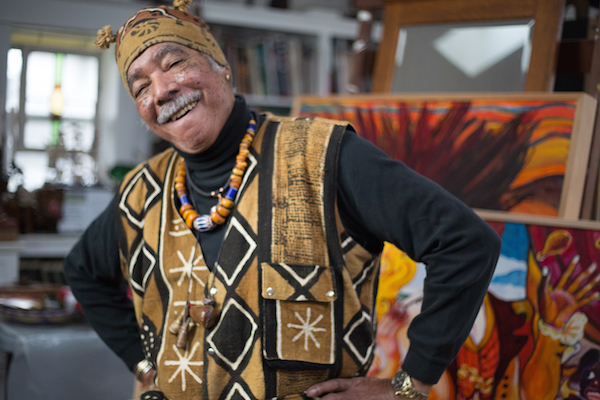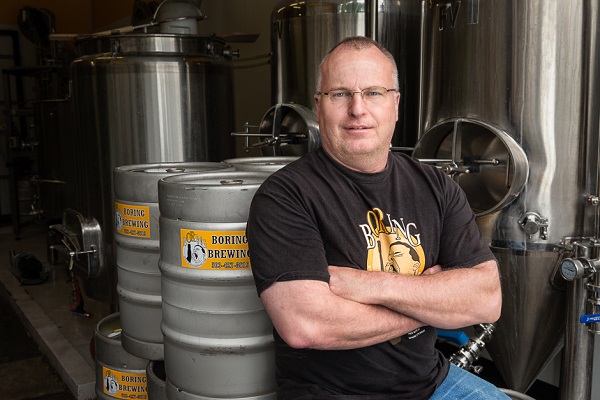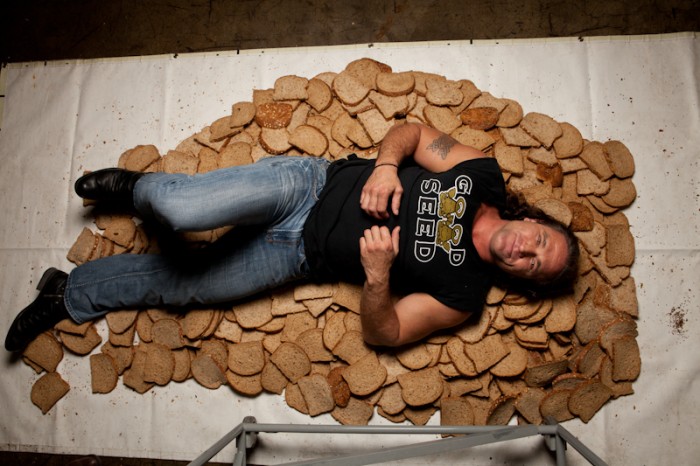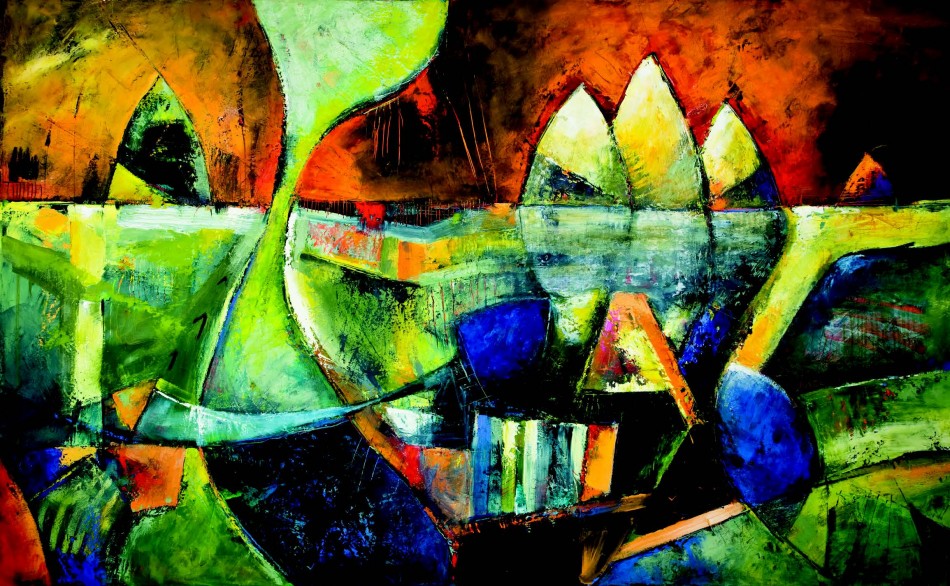written by Anna Bird | photos by Intisar Abioto
When teenage Arvie Smith walked into the Otis Art Institute in Los Angeles, he couldn’t get past the receptionist. She told the young black man, “We don’t need your kind here.”
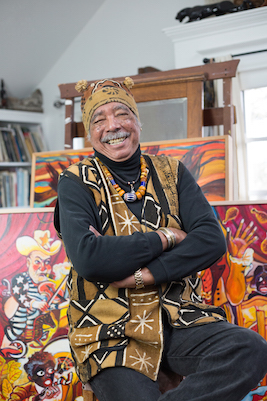
He dismisses the racism of the receptionist more than a half-century ago as a sign of the times. “This was in the ’50s, and that’s how people talked then,” Smith said in his home studio in northeast Portland. “It destroyed me. I didn’t know what to do about that.”
Themes of racial oppression and injustice fuel Smith’s work to this day. His paintings are bold in both color and subject-matter, replete with images of black people in cartoons, advertising, entertainment, art and contemporary pop culture. Some of the characters in his paintings are inspired by minstrel and vaudeville, shows such as “Amos and Andy,” and comics of “Dagwood and Blondie” ilk. Smith’s paintings confront stereotypes, inequality, brutality and atrocities that he believes are as much a part of history as they are relevant today.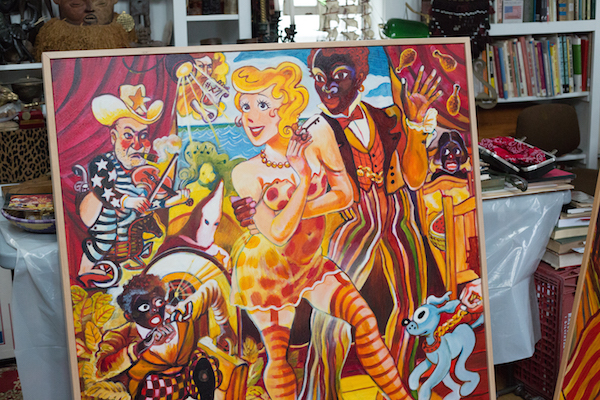
Born in 1938, Smith lived the first decade of his life in a tiny rural town outside of Jasper, Texas, a town with a violent history of racial conflict. He lived on a big farm with his mom, siblings, grandparents and a greatgrandmother who had been born a slave. One day, Smith made a copper tooling—a type of metal art—of his horse and gave it to his great-grandmother. “She was just ecstatic,” he said. He thinks he must have received an extra piece of pie for his work because, from that point on, he was hooked on art.
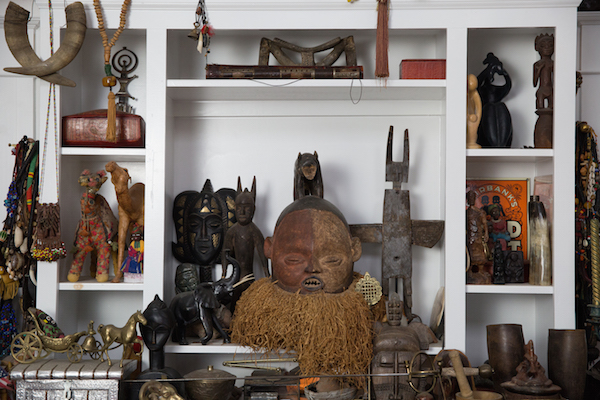
His mother moved to LA after divorcing Smith’s dad, and when Smith was about 12 years old, he moved to LA after his mom had settled in. Going from a town with one gas station that doubled as a post office to south central LA was a bit of an adjustment, to say the least. “But you survive, you get into it,” Smith said. “Without having a dad around, you get into the gang thing. You were either prey or a predator, that’s just the way it was.”
Through high school, he stuck with art. He designed football and basketball posters, along with jackets for gangs. After graduating and getting turned away from his first attempt at attending art school, Smith went to UCLA and became a counselor. His counseling career is what eventually brought him to Portland, where, on the way to work every day, he passed the Pacific Northwest College of Art.
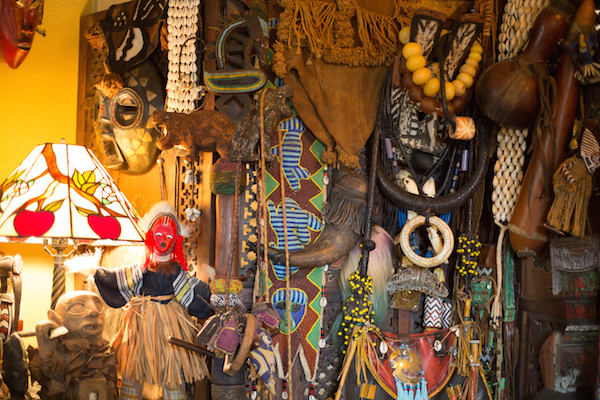
In 1982, with encouragement from his wife, Julie, he applied to PNCA and got in. “I wanted to know everything that all those other artists knew,” Smith said, “so I took a double major, and it was a blast. I was doing what I had wanted to do all my life.”
Ever since, Smith has been a force in the art world, gaining national recognition, exhibiting his work in museums and galleries around the world, studying in Italy and working with kids in the Portland community.
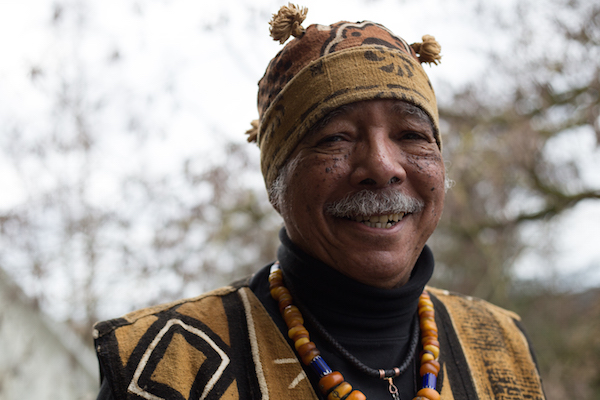
A huge recognition of his achievements came in 2015, when the Oregon Art Education Association (OAEA) awarded Smith for Distinguished Service Outside the Profession. He has been an artist in residence and teacher since 1994 at SEI (Self- Enhancement Incorporated), a Portland nonprofit supporting at-risk urban youth; a board member for KoFalen, a cultural center and art school in Mali; and helped youth at the Donald E. Long Juvenile Center create five murals called “Project Hope.”
“I think that I have a talent,” Smith said about his motivation for painting. “I know I can make a lot of money doing portraits … but it’s got to be more than that. I think it would be a waste because the world we live in has a history, and we define ourselves by that history. I want to make an impact on that—maybe I will, maybe I won’t.”


